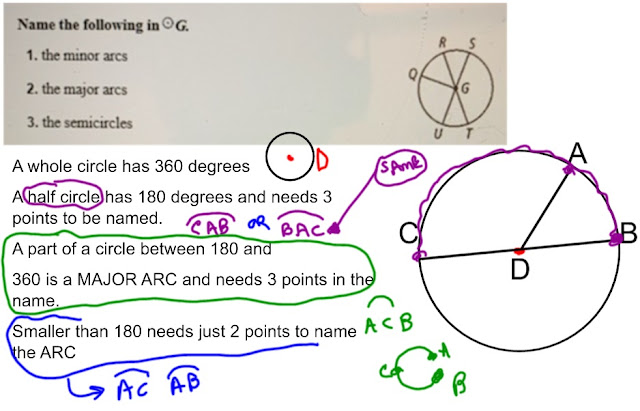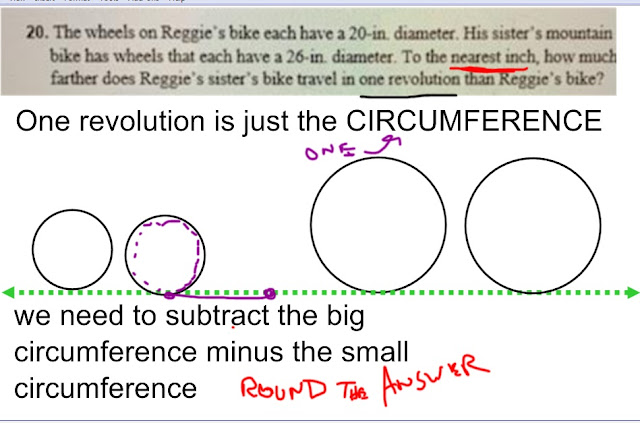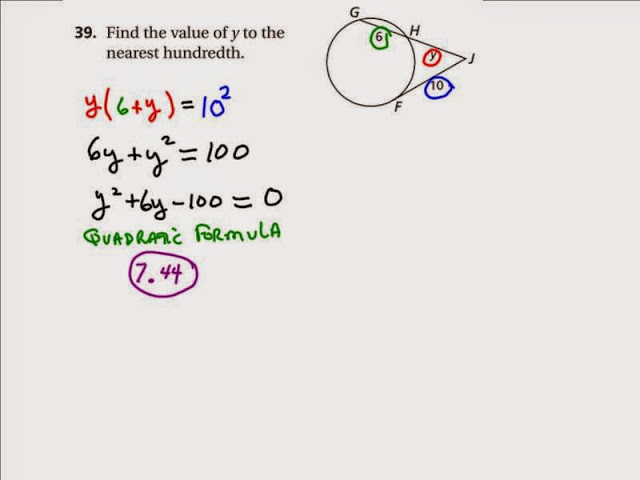Geometry
Saturday, March 18, 2023
Saturday, April 25, 2020
Mix of Circle problems
BELOW
I have given VERY STRONG HINTS
I have given VERY STRONG HINTS
to all the ONES that I feel MOST STUDENTS
will be able to do.
The few that I did not do
are going to be difficult for everyone.
If you need explanations on
the ONES BELOW
we could talk on the phone SUNDAY.
GOOD LUCK...
*******************************************************
***********************************************************
***************************************************************
***************************************************************
****************************************
*****************************************
*************************************************
**************************************************************
************************************************************
38, 39 and 40
Pretty much the SAME
******************************************************************
Tuesday, May 19, 2015
Sunday, August 10, 2014
CONTENTS
INTRO to GEOMETRY - Points, Lines, and Planes
INTRO to GEOMETRY - Segments and Their Measures
INTRO to GEOMETRY - Angles and Their Measures
INTRO to GEOMETRY - Segment and Angle Bisectors
INTRO to GEOMETRY - Angle Pair Relationships
INTRO to GEOMETRY - Perimeter, Circumference, and Area
INTRO to GEOMETRY - Misc.
PROOF - Inductive Reasoning
PROOF - Conditional Statements
PROOF - Deductive Reasoning
PROOF - from Algebra
PROOF - about Segments
PROOF - about Angles
PROOF - Perpendicular Lines
PROOF - Parallel Lines and Transversals
PROOF - in the Coordinate Plane
PROOF - Misc.
CONGRUENT - Triangles and Angles
CONGRUENT - Proving using SSS and SAS
CONGRUENT - ASA and AAS
CONGRUENT - using CPCTC
CONGRUENT - Isosceles, Equilateral, Right Tri
CONGRUENT - Coordinate Proof
CONGRUENT - Misc.
TRIANGLES - Perpendiculars and Bisectors
TRIANGLES - Medians and Altitudes of a Triangle
TRIANGLES - Inequalities in One Triangle
TRIANGLES - Misc.
POLYGONS - Definitions and types
POLYGONS - Quadrilaterals
POLYGONS - Properties of Parallelograms
POLYGONS - Proving Quads are Parallelograms
POLYGONS - Proving Quads are Rhombuses
POLYGONS - Proving Quads are Rectangles or Squares
POLYGONS - Properties of Trapezoids and Kites
POLYGONS - Misc.
SIMILAR - Ratio and Proportion
SIMILAR - Proportions in Geometry
SIMILAR - Similar Polygons
SIMILAR - Proving Triangles are Similar
SIMILAR - Misc.
RIGHT TRIANGLES. - The Pythagorean Theorem
RIGHT TRIANGLES. - Converse of the Pyth.
RIGHT TRIANGLES. - Special Right Triangles
RIGHT TRIANGLES. - Misc.
TRIG - Right Triangles and Trig
TRIG - Similar Right Triangles
TRIG - Trigonometric Ratios
TRIG - Solving Right Triangles
TRIG - Vectors
TRIG - Misc.
CIRCLES - Tangents
CIRCLES - Segment Lengths
CIRCLES - Arcs and Chords
CIRCLES - Inscribed Angles
CIRCLES - Other Angles
CIRCLES - Equations of Circles
CIRCLES - Misc.
DISTANCE - two points in plane
DISTANCE - Perimeters of Similar Figures
DISTANCE - Circumference and Arc Length
DISTANCE - Misc.
AREA - Circles
AREA - Regular Polygons
AREA - Similar Figures
AREA - Circumference and Arc Length
AREA - Areas of Circles and Sectors
AREA - Misc.
TRANSFORMATIONS - Motion in a Plane
TRANSFORMATIONS - Rotations
TRANSFORMATIONS - Reflection
TRANSFORMATIONS - Translations and Vectors
TRANSFORMATIONS - Misc.
SOLIDS - Surface Area and Volume in General
SOLIDS - Surface Area of Prisms and Cylinders
SOLIDS - Surface Area of Pyramids and Cones
SOLIDS - Surface Area of Spheres
SOLIDS - Volume of Prisms and Cylinders
SOLIDS - Volume of Pyramids and Cones
SOLIDS - Volume of Spheres
SOLIDS - Misc.
INTRO to GEOMETRY - Points, Lines, and Planes
Point
A specific place in space. They are infinitely small (they have no size)
and are denoted by a single capital letter,
in this case, A.
Line
A straight path that extends infinitely in both directions.
Lines are denoted by two points on the line under a line symbol, <->.
Also, they are made up of an infinite number of points.
Plane
A flat surface that extends infinitely in all directions.
Planes have no thickness whatsoever and can be made using a minimum of three points.
Shown here is a plane being intersected by two lines.
Planes are named by four points on the plane
(i.e. "plane ABCD").
Subscribe to:
Posts (Atom)











































